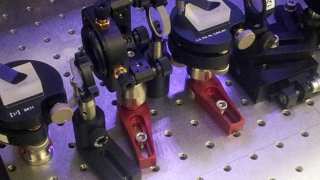An ongoing debate into whether digital or analogue reproduction sounds better was supposed to be resolved, when we made the transition from vinyl records to CDs. In terms of size, storage and durability, CDs also had the upper hand.
Despite this, in recent years vinyl records, considered obsolete by many after the advent of digital music by the mainstream buying public, have gained a rather unexpected popularity. This might have made the collectors happy, but, at the same time, the law of supply and demand has increased the vinyl records’ price. The increasing sales, combined with a modernization of their production methods might bring a new and even more astounding upsurge in their demand and a new dominance in the market of physical reproduction collector’s items.
Harm Theunisse’s Dutch manufacturer Sycomen, which specializes in CD manufacturing machines and supplies, is testing a new pressing technique which promises to increase vinyl production efficiency as well as making it cheaper. The new injection molded technology avoids using steam, unlike the standard method which uses steam to heat up the PVC (vinyl) puck and then presses it between two large stampers to create the record. Steam heats the vinyl to 180oC, while the two stampers are pressed together for about 8 seconds and cooled for another 16 seconds, while any excess material that spills out is cut off. It is the force used in this process that causes wear on the stampers. This in turn puts a limit on the number of records that can be produced before the stamper has to be replaced due to excessive wear and tear, which is roughly after 1,500 - 2,000 records have been pressed.
In the injection molding process, the plastic mixture is warmed up in advance, injected in between two stampers and then pressed for a few seconds and cooled for another 20 seconds to make sure the mixture reaches the outer edges of the stampers. The quantity of the material used is exactly measured, so there is no excess material. Because there is no pressure on the stampers, they can be used for a longer period of time without affecting the quality. “With this method, the plastic is injected straight into the grooves, which copies the impression on the stamper better than the conventional method, in which the vinyl is being pushed onto the grooves at an angle” Harm explains.
The reduced pressure on the stampers will reduce energy costs for manufacturers by 65%, also meaning that machinery will last longer. Furthermore, due to reduced maintenance on the machines, the whole production flow will become cheaper and more efficient. The timeline for pressing records using the old method was 16 weeks, but using the new method reduced this to just two weeks. This is comparable to the timeline for CD production. At the same time, Harm Theunisse claims that according to the sound engineers who have tested the new injection molded records, the sound quality is better than that of vinyl records produced using the traditional pressing method. The concept of injection molded records has been applied in the past, mostly for single 7″ records, but not in a 12″ size on a large scale. The method is still undergoing testing by the manufacturers, but they’ve just received a hefty grant towards the project so the end product could be refined sooner than you might think.
If this technique lives up to its promises, we may well see an unforeseen turn in music production. Who knows, vinyl records might replace CDs, or at least share their role as the future of music.
Top image: Vinyl player. (Public Domain)







No comment